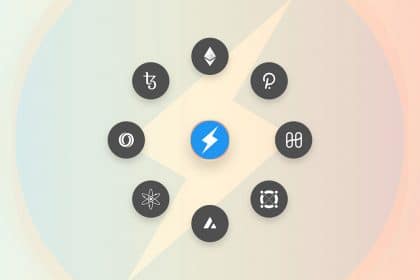Having introduced and developed the necessary infrastructure, DSLA protocol has put in place such an aspect that makes the project key in the future growth prospects of various industries.
DSLA Protocol has announced the launch of Version 1.0 that encompasses in-house innovations running on blockchain technology. DSLA is a peer-to-peer alternative to service level agreements (SLAs), outsourcing contracts that bring an extra layer of trust to the user-provider relationship, by guaranteeing consistent performance, for users and holding providers accountable for performance failures.
The DSLA protocol was developed to help users navigate easily through third-party services, and incentivize provider excellence. As a result, users can reduce the level of risk exposure and maximize quality and timely delivery. “DSLA Protocol is a risk management framework that enables developers and infrastructure operators to reduce their users’ exposure to service delays, interruptions, and financial losses, using self-executing service level agreements, bonus-malus insurance policies, and crowdfunded liquidity pools,” the company noted through its official website.
According to the developers, DSLA Protocol version 1.0 is expected to run on the Ethereum mainnet layer 1. DSLA Protocol will be deployed to an Ethereum layer 2 solution shortly after, as well on the Harmony and Avalanche blockchain networks.
Key Features of the DSLA Protocol V1.0
Having introduced and developed the necessary infrastructure, DSLA protocol has put in place such an aspect that makes the project key in the future growth prospects of various industries.
One of the in-house innovations is Risk Prediction Markets, which enable developers, users, and liquidity providers to trade risk with each other using Decentralized Service Level Agreements (DSLA).
Another innovation is Reliability Forecasts. They enable third-party risk assessment at a glance, through the wisdom of the DSLA marketplace and its participants.
Other notable innovations include SLA Futures Positions, A Triple Token Design, SLA Staking Rewards, Native Token Burns, Programmable SLAs, Developer Tools, and No Code Tools. These key features of the DSLA make the protocol viewed as the 1st Risk Management framework of its kind.
The DSLA protocol is focused on decentralized finance (DeFi) risk reduction. The decentralized financial ecosystem has been one of the hottest topics in the blockchain and crypto industry for the past few months. A lot of developers and investors have dived into the DeFi industry to tap on the vast global market.
However, the risks involved in the DeFi ecosystem prevent the industry from growing to the next level of adoption. While insurance products provide an initial level of protection against hacks, DeFi users are exposed every day to third-party failures and volatility. Until now, there was no hedging instruments against DeFi Infrastructure and market risks, and DSLA Protocol is filling this important gap in the industry.
Among other risks, DSLA Protocol is specialized in mitigating the risk of staking efficiency (APR) drops, as well as the Impermanent Loss that decentralized exchanges and non-fungible tokens (NFT) are exposed to.
next